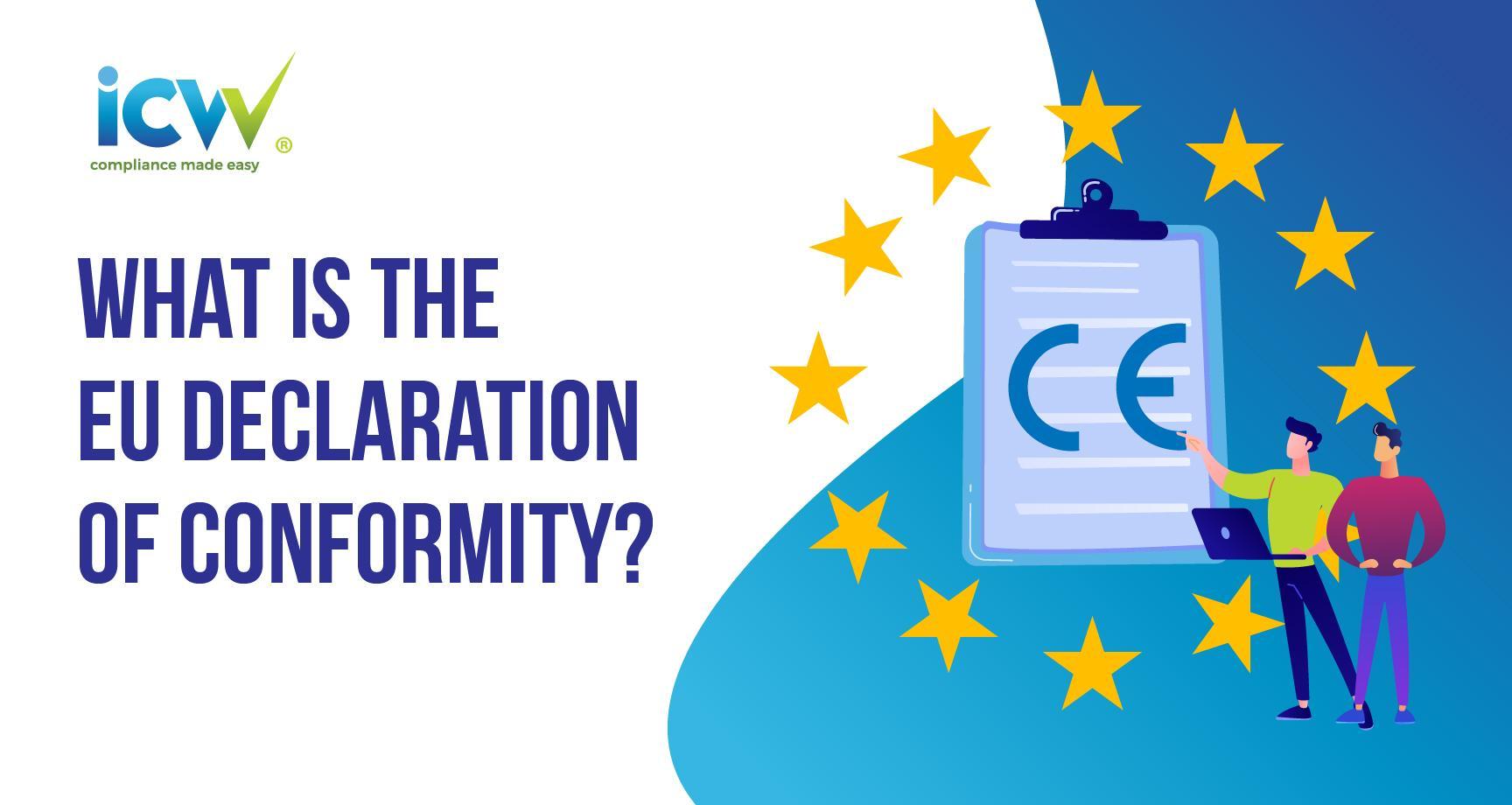The EU Declaration of Conformity is a legally binding document in which the provider of an AI system formally declares that the system meets all applicable requirements of the EU AI Act and other relevant legislation. It is a mandatory component for placing high-risk AI systems on the EU market and a key step in securing CE marking. This declaration confirms that the system has passed conformity assessment procedures and adheres to the standards governing safety, transparency, risk management, and data governance.

1. Background and Establishment
In the EU’s regulatory ecosystem, the Declaration of Conformity (DoC) serves as the final confirmation of legal compliance before a product can be marketed. Traditionally used for medical devices, machinery, and electronics, this mechanism is now extended to high-risk AI systems under the EU Artificial Intelligence Act.
The Declaration is not merely a symbolic gesture—it is a legally enforceable self-certification that the provider assumes full responsibility for. Submitting a false or incomplete declaration can lead to market bans, fines, and legal liability.
2. Purpose and Role in the EU AI Compliance Lifecycle
The EU Declaration of Conformity enables:
- Market access for high-risk AI systems within the European Economic Area (EEA)
- Demonstration of compliance with risk management, data governance, and transparency obligations
- Legal traceability in case of audits, investigations, or incidents
- Confirmation that the system meets harmonized standards or approved common specifications
It is the final step in the conformity assessment process—and a precondition for affixing the CE mark.
3. Key Elements and Legal Requirements
According to Article 48 and Annex V of the EU AI Act, the Declaration of Conformity must include:
- Name and address of the AI provider
- Identification of the AI system (name, version, purpose)
- Confirmation that the system complies with the EU AI Act and relevant directives
- Reference to harmonized standards or common specifications used
- Identification of any Notified Body involved in the assessment (if applicable)
- Name and signature of the authorized person making the declaration
- Date and location of issuance
The Declaration must be drawn up in writing, included with the technical documentation, and made available to authorities upon request.
4. Connection to the EU AI Act and the EU AI Safety Alliance
The EU Declaration of Conformity is a required outcome of:
- Risk assessment and management system implementation (Article 9)
- Fulfillment of data governance obligations (Article 10)
- Completion of technical documentation (Annex IV)
- Passing a conformity assessment procedure (Article 43–47)
The EU AI Safety Alliance plays a vital role by:
- Supporting providers in preparing technical files and declarations
- Offering DoC templates aligned with Annex V
- Guiding providers through the conformity assessment process
- Verifying alignment with harmonized standards and post-market obligations
By working with the Alliance, providers can minimize legal exposure and ensure the Declaration is complete, accurate, and defensible.
5. Responsibilities of the Provider
Only the AI provider—defined in Article 3(2) of the EU AI Act—can issue the Declaration of Conformity. Their responsibilities include:
- Conducting or commissioning all required testing, evaluations, and documentation
- Ensuring that all legal and ethical design safeguards are in place
- Retaining the Declaration for 10 years after the system is placed on the market
- Submitting the Declaration to national authorities or market surveillance bodies upon request
False or negligent declarations can result in fines up to €35 million or 7% of annual global turnover.
6. Common Mistakes and Risks
Typical risks in preparing a Declaration of Conformity include:
- Incomplete or outdated technical documentation
- Misidentifying the applicable risk category or standards
- Failing to update the declaration after system modifications
- Issuing a declaration before conformity assessment is fully completed
- Lack of traceability between the declaration and supporting evidence
Avoiding these pitfalls is essential for market access and legal protection.
7. How to Prepare a Valid EU Declaration of Conformity
To prepare a compliant Declaration:
- Complete a conformity assessment appropriate to the AI system’s risk level
- Finalize the technical documentation required by Annex IV
- Refer to relevant harmonized standards or common specifications
- Use the Annex V template as a structural guide
- Include all legally required information—no omissions
- Digitally sign and archive the document for at least 10 years
- Validate the declaration with the EU AI Safety Alliance before distribution or CE marking
Treat the Declaration as a legal affidavit—because in the eyes of regulators, it is.

